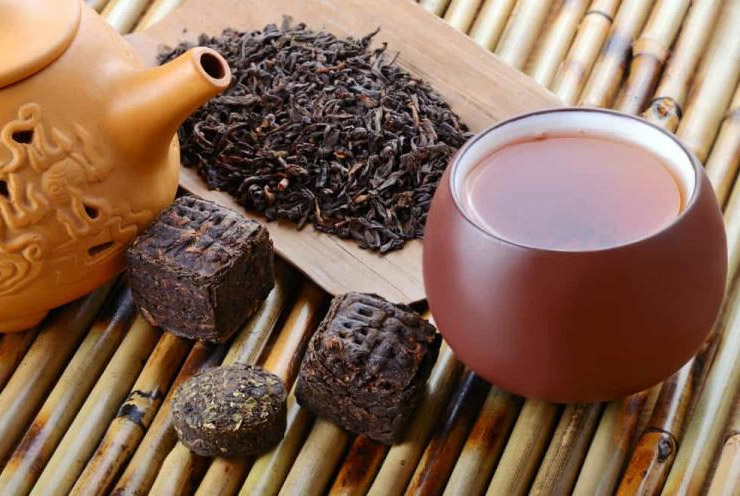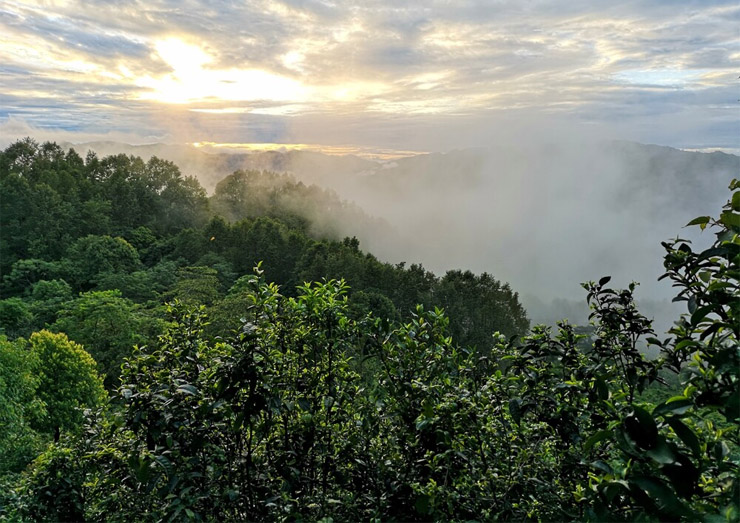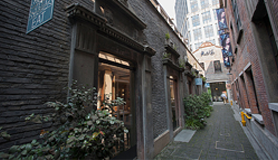
보이차
보이차의 가장 큰 특징은 마치 메주를 띄우는 것과 같이 효모균을 이용한 후발효를 거친 후발효차라는 것이다. 원래는 따로 발효시키지 않은 찻잎을 뭉쳐놓은 형태였으나, 이를 종이 등에 싸거나 나무통에 넣어 매달아서 오래 보관하다 보니 그 지역에 자생하는 효모균이 찻잎에 번식하여 후발효가 일어나게 되었다. 이러한 과정을 거쳐 잘 숙성된 보이차는 찻물이 검붉은색을 띄며 이러한 특징 때문에 중국 내에서는 흑차(黑茶)라고 부르기도 한다. 이 차는 녹차의 제조법과 비슷하게, 햇볕에 말려서 효소의 작용을 억제하는 쇄청 과정을 거친다. 그러므로 보이차는 홍차와 달리 잎 자체의 효소에 의해 발효된 것이 아니다. 이 점이 같은 발효차라고 할 수 있는 홍차와 보이차의 가장 큰 차이점이다.
[자세히보기]출처 : 나무위키
Puer Tea
Pu'er traditionally begins as a raw product known as "rough" máochá and can be sold in this form or pressed into a number of shapes and sold as "raw" shēngchá. Both of these forms then undergo the complex process of gradual fermentation and maturation with time. The wòduī fermentation process developed in 1973 by the Kunming Tea Factory created a new type of pu'er tea. This process involves an accelerated fermentation into "ripe" shóuchá which is then stored loose or pressed into various shapes.
[Learn more]Source : Wikipedia
ⓤ Cultural Landscape of Old Tea Forests of the Jingmai Mountain in Pu'er / 푸얼 지역의 징마이산 고대 차림 문화경관

Cultural Landscape of Old Tea Forests of the Jingmai Mountain in Pu'er
Located on Jingmai Mountain in southwestern China, this cultural landscape was developed over a thousand years by the Blang and Dai peoples following practices that began in the 10th century. The property is a tea production area comprised of traditional villages within old tea groves surrounded by forests and tea plantations. The traditional understorey cultivation of old tea trees is a method that responds to the specific conditions of the mountain’s ecosystem and subtropical monsoon climate, combined with a governance system maintained by the local Indigenous communities. Traditional ceremonies and festivities relate to the Tea Ancestor belief that spirits live in the tea plantations and in the local fauna and flora, a belief that is at the core of this cultural tradition.
[자세히보기]출처 : UNESCO










 HOME
HOME


 0
0




